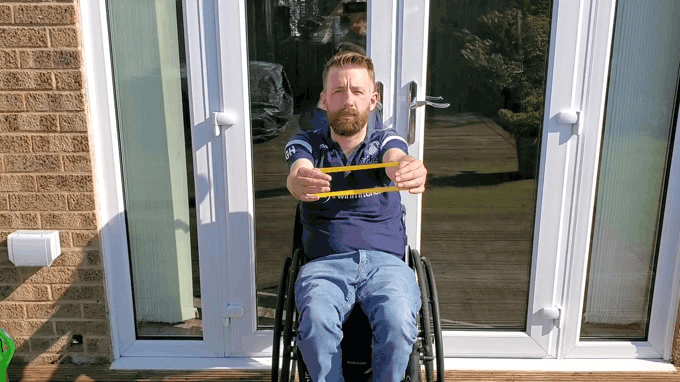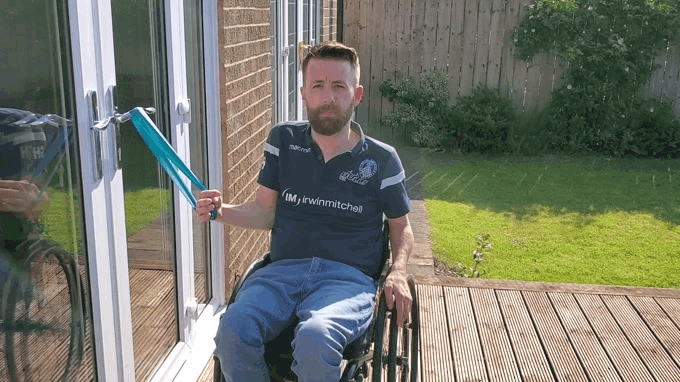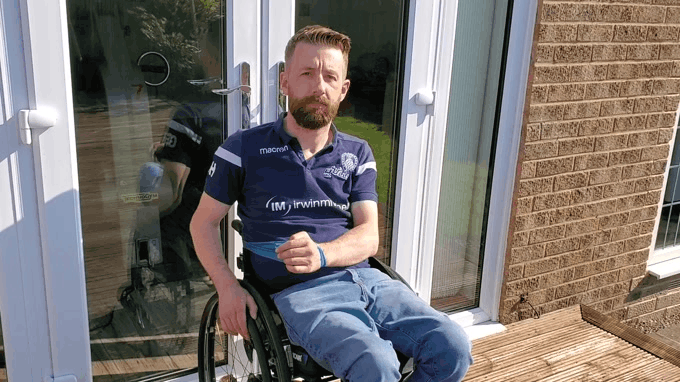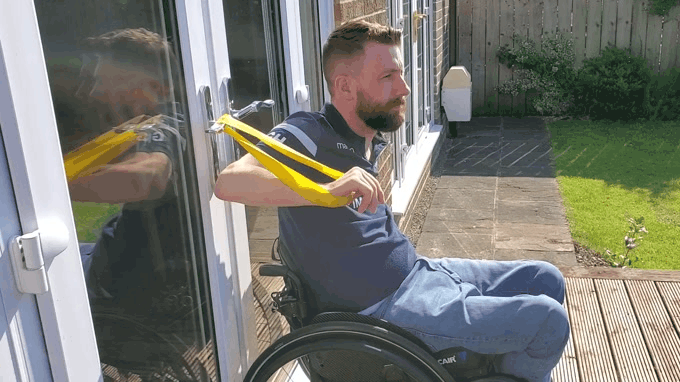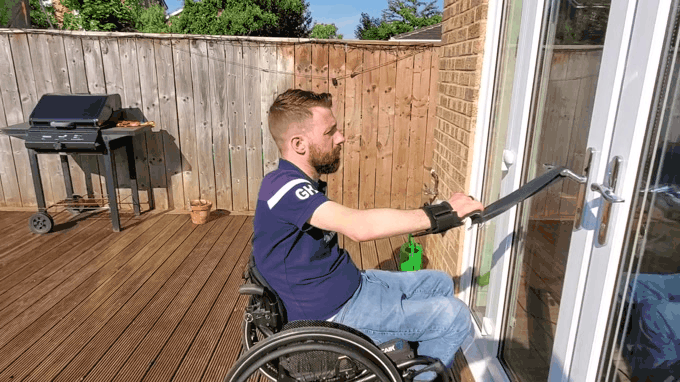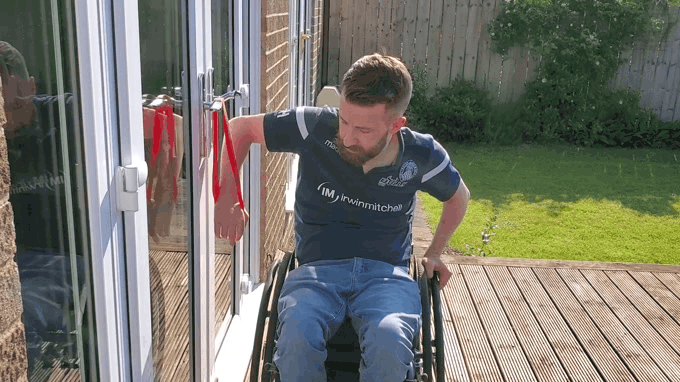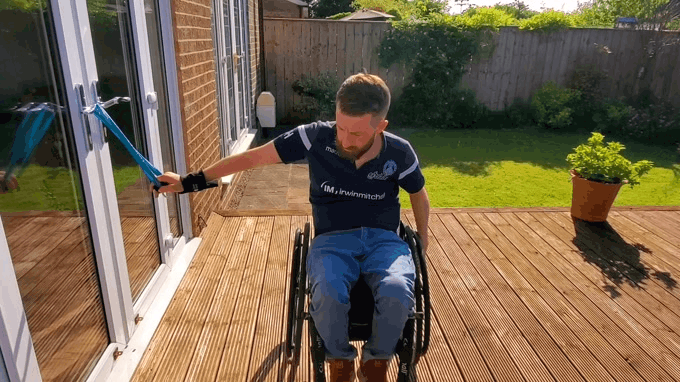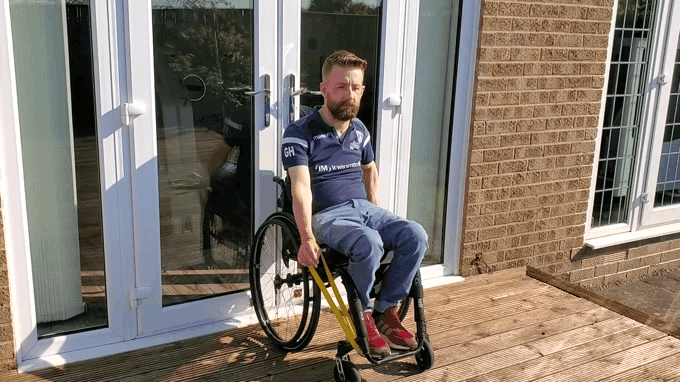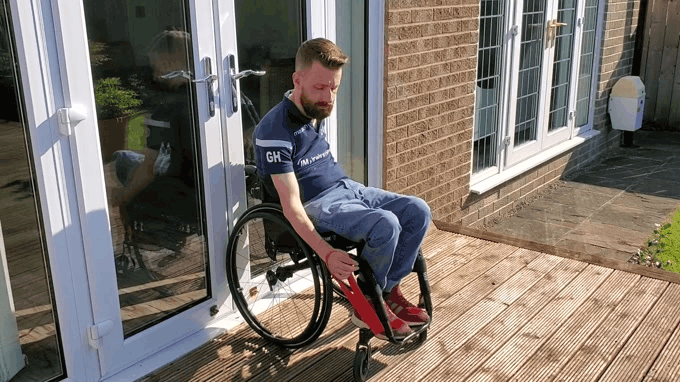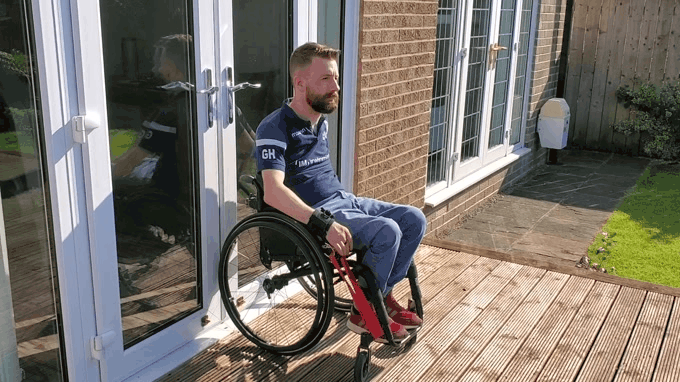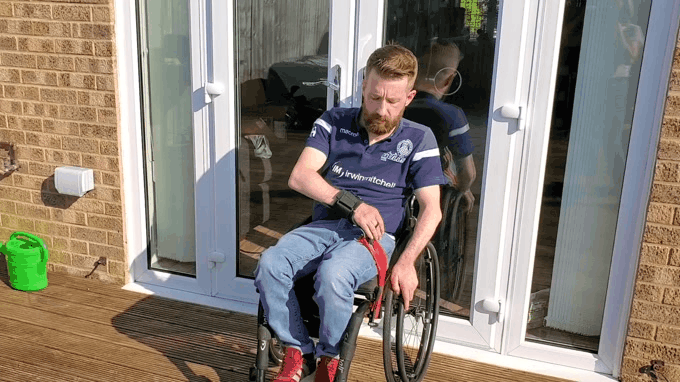Your basket is currently empty!
Active Hands and Therabands – How To Work Out With The Sun Out!
Sittin’ On The Deck Of The Bay Windows
After what felt like the longest winter imaginable here in the UK, with my hoodie ‘n’ heating combo lasting until the end of May; this past month has finally seen the rain let up and temperatures break into the tumultuous teens! With so long spent indoors over the colder 6+ months, it feels genuinely rejuvenating to go outside, water the plants, feed the birds, and then just sit and feel the warmth of the sun on my face. So much so in fact, that I start to get antsy if I’m sat on the living room sofa and happen to look out of the French doors to see the garden lit up with sunbeams.
This being the case, I’ve started finding myself doing more and more “in-house” activities outdoors, specifically on the decking in my back garden. Nothing too extreme of course, I’m not heading out back every morning with a bar of soap and a bottle of Head & Shoulders to give myself a hosing down! More I’m going outside to REEDE: read, eat, email, drink, exercise. Yes, I just made that acronym up but let’s pretend it’s a thing!
Now I know what you’re thinking, exercise is something that can be done equally if not more so outdoors than in, and this is largely true (though I would argue not always for wheelchair users). However, the specific kind of exercises I’m referring to here involve an item that is almost always used in indoor settings: resistance bands aka therabands.
What Are Therabands and Why Use Them?
Therabands are latex bands/tubes of varying resistance levels. They are commonly used by physiotherapists and athletes but are also great for everyday strength training exercises. Bought as either ready-made bands or rolls that can be cut to the desired length, these are some of the most versatile, inexpensive and convenient pieces of equipment you can get, opening up a huge number of stretches and exercises that can be carried out in virtually any surrounding, from the comfort of your own wheelchair.
When compared to the likes of free weights, therabands actually offer you a greater range of motion and create resistance in all directions, allowing you to activate more muscle fibers and stabiliser muscles. The fact that you are creating resistance in all directions also helps cushion the joints as it means you are working to slowly release each rep. This is particularly important to wheelchair users, as joint issues, especially in the shoulders, can become very problematic, so it is imperative we do everything we can to protect and strengthen these areas. Nowadays I try to limit my use of free weights as much as possible for this very reason, as I find certain exercises to be quite jarring and usually result in me getting a dull pain in and around my rotator cuffs shortly after.
As I mentioned earlier, therabands are almost always used in an indoor setting. However there is absolutely nothing stopping you from taking them outdoors and into the sun; all you need is something to hook them round to provide resistance. I find myself far more invigorated when exercising in the sun with my headphones in and a breeze on my face than when doing the same in a stuffy room. With this in mind, I’m going to look at a few of the muscle and joint strengthening exercises you can do outside using therabands. Many of these exercises can be done without the need for grip; however, where a certain amount of grip is required, I use the Active Hands Hook Aids to achieve this.
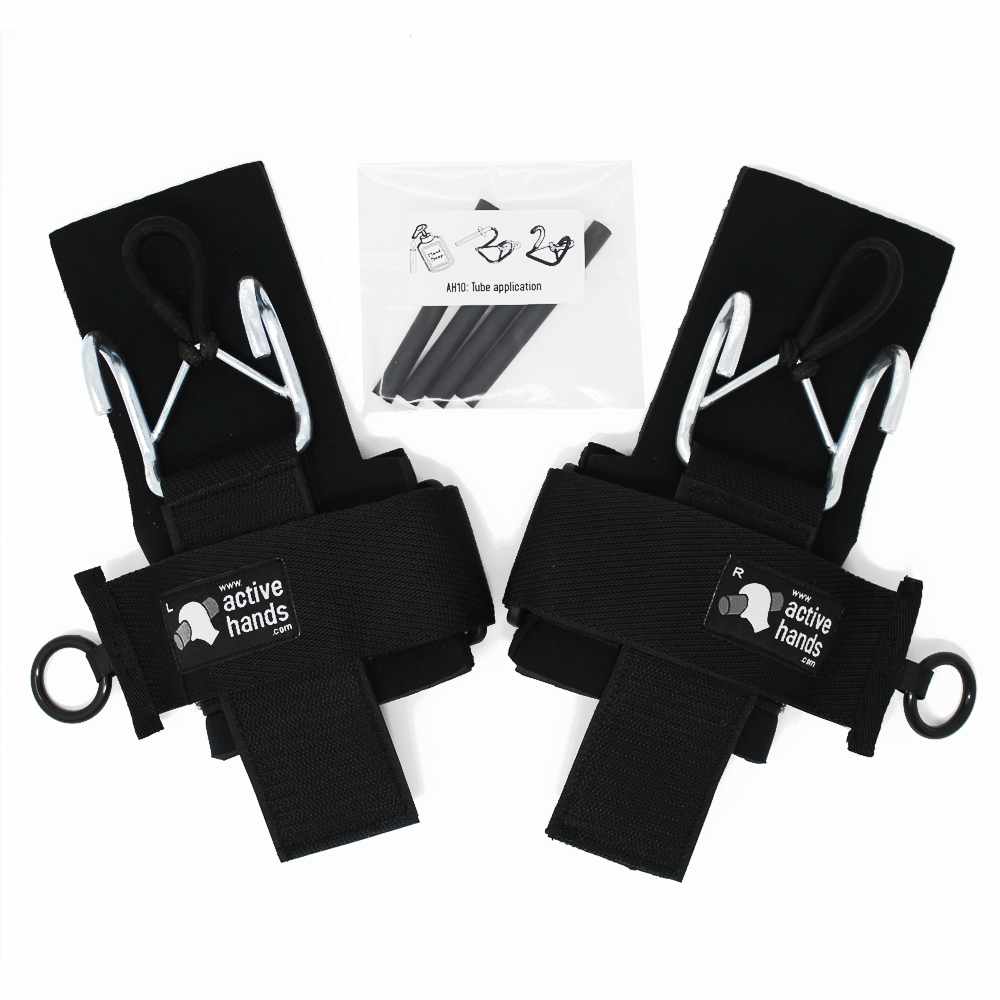
Chest Pull
A very basic one to start with. Simply put your hands through the theraband so that it is resting against the back of them, hold them out around chest level, and then pull your hands away from each other before doing a controlled release. (All of these exercises require a controlled release after each rep, but to save things from becoming repetitive I’m only mentioning it in this first one.)
Internal Rotation
For this one you will need to hook one end of the theraband around either the handle/armrest of your wheelchair or a door handle (whichever you have available/feel most comfortable with). Then hook the other end around whichever hand is on the same side as the theraband and, whilst keeping your elbow bent at your side, pull the theraband across your body, towards your stomach.
External Rotation
Set up in exactly the same way as the internal rotation, this time hook the other end around the opposite hand and pull outwards, away from your stomach, whilst still keeping your elbow bent at your side.
One Arm Chest Press aka Forward Punch
For this exercise you need to hook one end of the theraband around a door handle before reversing your chair against the door so that the handle is on the side of the arm you wish to work-out. Then take the other end of the band in your hand and push your arm away from the door, punching forwards.
One Arm Row
With the theraband still hooked around the door handle, turn so that you are facing the door and, using the Hook Aid, hook the other end of the band. Then pull your arm back and away from the door, ideally until your elbow is behind you and your hand is in line with your chest.
One Arm Push Down aka Downward Punch
This time sit side-on to the door and, with one end of the theraband around the door handle, take the other end in your nearest hand so that your elbow is in line with your shoulder, and push downwards in a punching motion.
Sideways Pull Down
Again you want to be sat side-on to the door with the theraband around the handle; however, this time you want to be sat as far away from the door as possible whilst still being able to reach the band. Use the Hook Aid to latch onto the loose end of the band and then, with your arm outstretched and your palm facing down, pull your arm down to your side, keeping it as straight as possible throughout.
Sideways Pull Up
For this exercise you need to roll one of your casters over the theraband and pull it upwards so that you have it hooked to the bottom of your wheelchair. Then hook your nearest hand through the other end so that the material is resting against the back of it and, with your arm straightened, lift it up until it is around shoulder height.
Bicep curl
The old classic. With the theraband hooked to the bottom of your chair at one end and around your hand at the other, simply curl your forearm upwards.
Bent Arm Pull Up
Keeping the theraband hooked around a caster, this time slip on a Hook Aid and hook onto the band. Then pull your arm upwards, bending at the elbow, as if you are trying to start an old fashioned lawn mower!
Diagonal Row
This final one can be done with the theraband still hooked around a caster, however I find it more comfortable to move it upwards slightly and hook it around one of my brakes. Then, with the Hook Aid on the opposite hand to the side of the theraband, hook onto the band and pull diagonally across your body, keeping your elbow bent.
A Summery Summary
So there you have it, a handy handful of simple exercises you can set up outdoors using your wheelchair, a door handle, your Active Hands Hook Aids and a pack of therabands. I tend to do 3 sets of 10 reps on each arm, changing up the theraband depending on the level of resistance required. I also don’t profess to being an expert when it comes to the multitude of exercises you can do with therabands (as you can probably tell from the names I’ve given most of these)! There will be plenty more I haven’t even thought of yet, so if you discover ones that work even better for you then fantastic! The main thing is that you’re enjoying the exercise, feeling positive about yourself and making the most of the summer fresh air – after all, this is Britain, it could start pouring down again at any moment!
Gareth Herridge
All exercises are undertaken at your own risk. If you are not sure if an exercise is suitable for you then please consult a medical professional.


